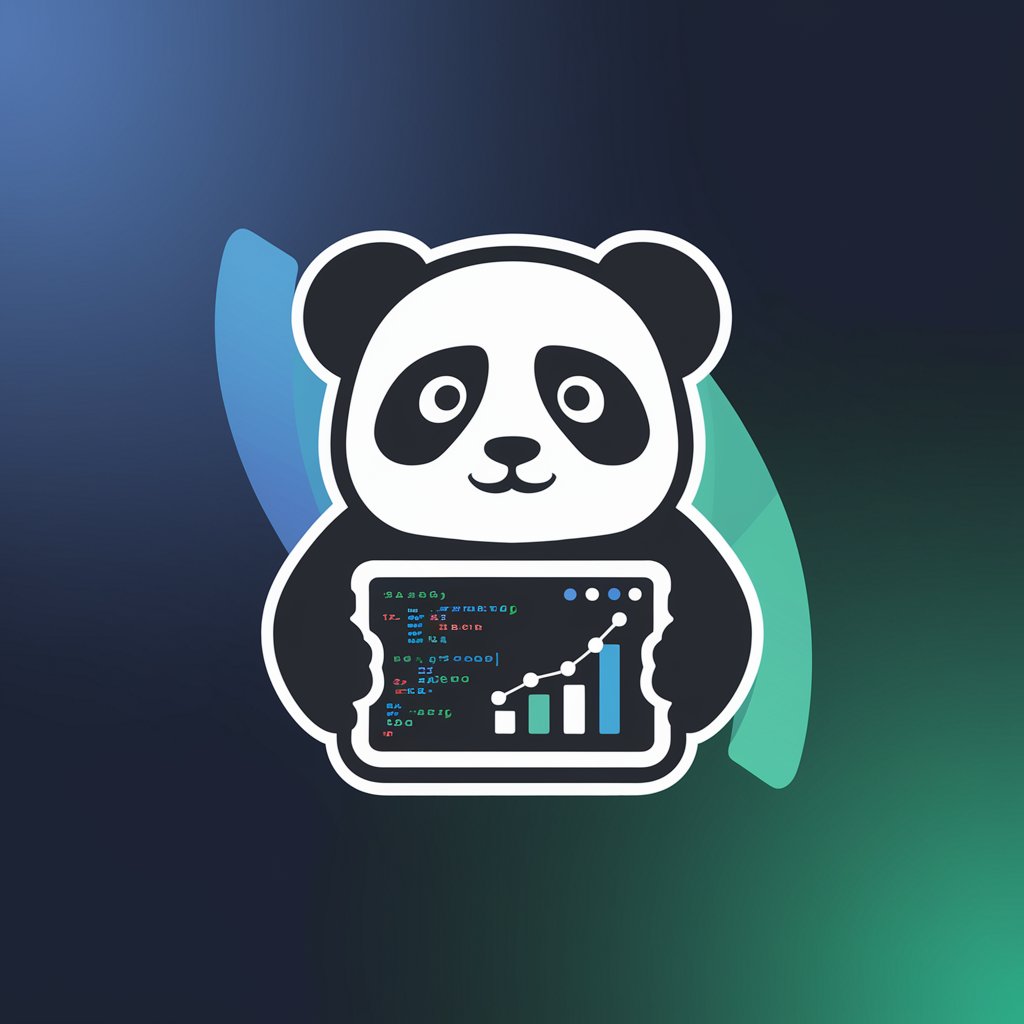Pandas CSV Helper - CSV Data Manipulation

Hi there! Excited to explore timestamped data with Pandas together!
AI-powered CSV Data Analysis
Guide me through analyzing timestamped CSV data
Encourage me to fix a datetime parsing issue
Help me understand time series in Pandas
Motivate me to clean timestamped data
Get Embed Code
Overview of Pandas CSV Helper
Pandas CSV Helper is designed to facilitate the manipulation and analysis of time-stamped data in CSV files using the Pandas library in Python. This specialized tool helps users read, process, and analyze data efficiently, particularly when dealing with large datasets that include time-series elements. For instance, a common scenario might involve loading a CSV file containing timestamped sales data from an e-commerce platform, and using Pandas CSV Helper to aggregate sales figures by date, extract trends over time, or clean inconsistencies in datetime formats. Powered by ChatGPT-4o。

Core Functions of Pandas CSV Helper
Loading and parsing CSV files
Example
pd.read_csv('data.csv', parse_dates=['timestamp'])
Scenario
A user needs to import a CSV file where the 'timestamp' column should be correctly interpreted as datetime objects. This function automatically converts these strings into datetime objects, facilitating subsequent time-based analyses.
Time-based filtering
Example
df[df['timestamp'] >= '2021-01-01']
Scenario
This function is used when a researcher wants to focus on data from a specific period. For example, filtering records to only include data from the year 2021 onward simplifies the analysis of recent trends or events.
Aggregating data over time
Example
df.resample('M', on='timestamp').sum()
Scenario
Business analysts often need to summarize data by month to report on sales or expenses. This function groups the data by month and calculates the total for each period, providing a clear view of monthly performance.
Converting time zones
Example
df['timestamp'].dt.tz_localize('UTC').dt.tz_convert('America/New_York')
Scenario
For global companies, data might be collected in UTC but needs to be analyzed in a local timezone. This function allows the user to convert all timestamp data from UTC to Eastern Time, ensuring that time-sensitive operations like daily sales cutoffs are correctly aligned.
Target User Groups for Pandas CSV Helper
Data Analysts
Data analysts frequently handle large sets of time-stamped data and require efficient tools to process, summarize, and analyze these datasets. Pandas CSV Helper facilitates these tasks by providing robust data manipulation capabilities that are essential for timely and insightful data analysis.
Researchers
Researchers working with historical data sets, such as environmental or economic data, can benefit from the specific functionalities offered for handling time-series data, such as resampling or time-zone adjustments, which are crucial for accurate analysis.
Business Analysts
Business analysts who need to generate reports and insights from transactional data will find Pandas CSV Helper especially useful. The ability to aggregate and filter data based on time criteria allows them to track business performance over specific intervals effortlessly.

How to Use Pandas CSV Helper
Initiate a Free Trial
Start by visiting yeschat.ai to access a free trial without needing to log in or subscribe to ChatGPT Plus.
Prepare Your Environment
Ensure that you have Python installed on your system along with the Pandas library, which is essential for data manipulation.
Load Your CSV Data
Use Pandas' `read_csv()` function to load your time-stamped CSV data into a DataFrame, which allows for easy manipulation and analysis.
Explore and Analyze
Utilize DataFrame methods like `describe()`, `groupby()`, and `plot()` to explore statistics, trends, and patterns in your data.
Export Your Results
After analysis, export your results or modified data using `to_csv()` to save your work or share it with others.
Try other advanced and practical GPTs
Pandas for Financial Data Analysis
Empower AI-driven financial insights

Fire Weather Expert
AI-driven wildfire prediction and management

Clothing Brand GPT
Enhancing Fashion Brands with AI

Heroclix Strategist
Strategize, Compete, Conquer - AI-Powered

Baldur's Gate 3 Class Synergy Guide
Optimize Your Adventure with AI-Powered Class Synergies

Quiver
Empowering Transparency in Congressional Investing

Python Pandas Pro
Empower your data manipulation journey with AI-driven guidance.

Power App Pro
AI-powered tool for optimizing Power Apps

EquityResearchAnalyst
Harness AI for deeper stock insights

Hilton Taghazout bay
Revolutionizing Instagram Content with AI

Additive model teacher
Simplify Complex Statistical Modeling with AI

Content Champion
Power Your Words with AI

Detailed Q&A on Pandas CSV Helper
How can I handle large CSV files efficiently with Pandas?
To efficiently handle large CSV files, you can use chunking with `read_csv()` by setting the `chunksize` parameter, allowing you to process large datasets in manageable parts.
What are some common errors to watch out for when reading CSV files in Pandas?
Common errors include incorrect delimiters, missing headers, or mismatched data types. Using parameters like `sep`, `header`, and `dtype` in `read_csv()` can help prevent these issues.
Can I merge data from multiple CSV files using Pandas?
Yes, you can use `concat()` or `merge()` functions to combine multiple CSV datasets into a single DataFrame, aligning data by columns or merging on specific keys.
How do I convert date strings in CSV files to datetime objects in Pandas?
Use the `parse_dates` parameter in `read_csv()` to convert date strings to `datetime` objects automatically, or manually convert them with `pd.to_datetime()`.
Is it possible to filter data based on dates in Pandas?
Yes, after converting date columns to `datetime`, use conditions in `.loc[]` or `.query()` to filter DataFrame rows based on specific dates or ranges.
